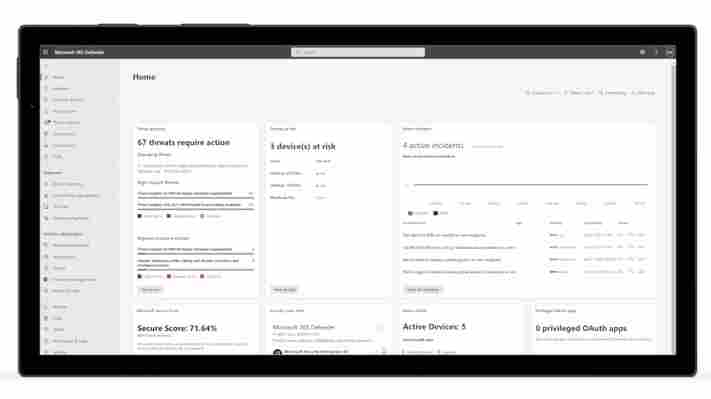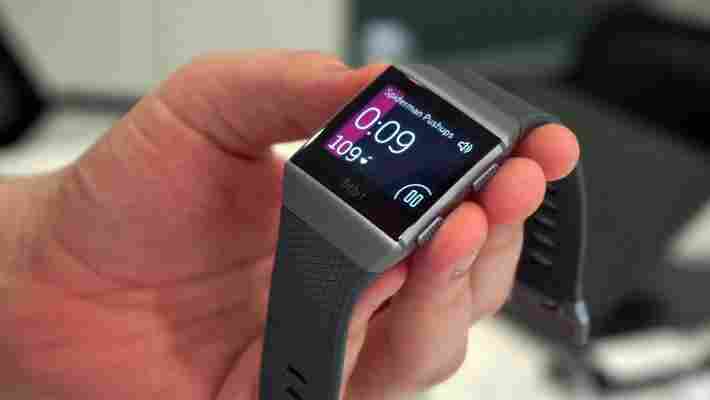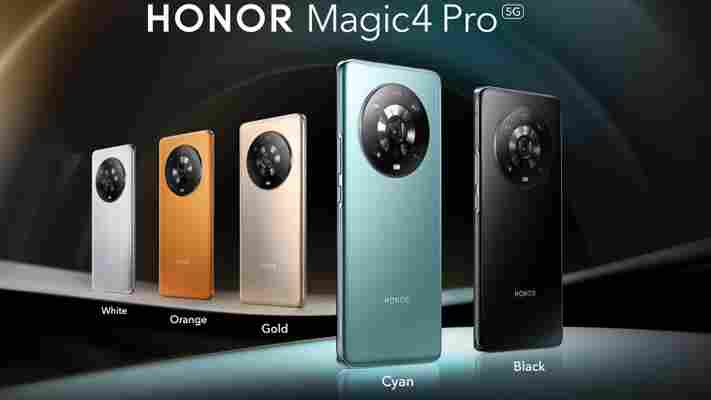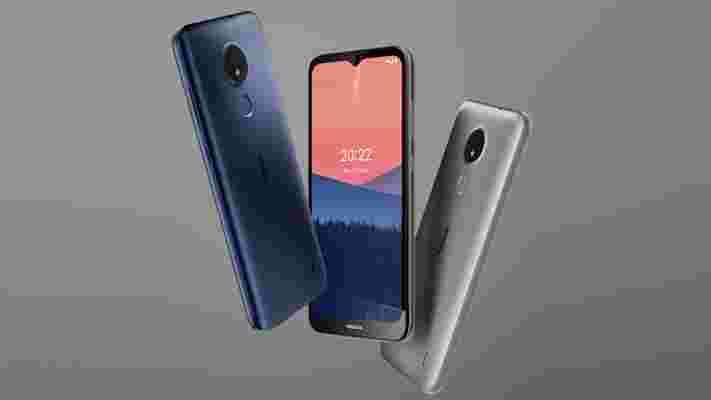Keeping your business endpoints safe should soon be easier than ever before thanks to a new release from Microsoft.
The company has revealed that its new Microsoft Defender for Business platform is now in general availability, with existing Microsoft 365 Business Premium customers the first to receive it.
Designed for small and medium-sized businesses (SMBs), Microsoft Defender for Business looks to help businesses with up to 300 employees, providing enterprise-grade protection.
Microsoft Defender for Business launch
In a blog post announcing the news, Microsoft 365’s product marketing manager Jon Maunder said the platform, "goes beyond traditional antivirus and delivers threat and vulnerability management, attack surface reduction, next-generation protection, endpoint detection and response, and automated investigation and remediation capabilities in a single solution."
For SMBs without a dedicated security team, Microsoft Defender for Business offers simple configuration and enables all recommended security policies out-of-the-box, so it's easy to use and set up without specialized assistance.

"The commercialization of cybercrime has led to an increase in the frequency and sophistication of attacks on small and medium-sized businesses (SMB)," Maunder added. "Business interruption is a top concern, especially from a cyber-attack such as ransomware . For smaller businesses this type of impact can be hard to manage with potential financial, operational, and customer trust implications."
Microsoft Defender for Business brings together a number of the company's existing security tools, including threat & vulnerability management, attack surface reduction, endpoint detection, and auto investigation, all in a single package.
Microsoft revealed back in November 2021 that Defender for Business was nearing a wider launch , with a public preview launched the month after.
Customers will be able to buy it as a standalone offering costing $3 per user per month. It will also be included as part of Microsoft 365 Business Premium accounts and can be integrated with Microsoft 365 Lighthouse.
New Microsoft 365 Business Premium customers will see Defender for Business available immediately, with other existing users seeing the service become available over the next few weeks.
Fitbit recalls over a million Ionic smartwatches over burn hazard – what you need to know
Fitbit has voluntarily recalled all of its Ionic smartwatches due to a risk of burns. The company says it's received a number of reports where the watch's lithium ion battery has overheated, injuring the wearer, and has decided to recall the watches in the interest of safety.
The Fitbit Ionic is one of the company's older watches. It launched in September 2017, and production stopped in 2020. Over a million of the devices were sold in the US, and a further 693,000 were sold internationally.
According to details published by the US Consumer Product Safety Commission , Fitbit received at least 115 reports of the watch's battery overheating in the US, and 59 internationally. There were 78 reports of burn injuries in the US, including two reports of third-degree burns, and four reports of second-degree burns. 40 burns were reported internationally.
What you need to do
If you own a Fitbit Ionic, you should stop using it straight away – even if it's working normally and doesn't feel hot – and contact Fitbit for a refund.
If you live in the US, you can call the company on 888-925-1764, and if you're in the UK you can call 0800 048 5842. Fitbit has also set up a dedicated support page for Ionic owners anywhere in the world, where you'll find instructions explaining how to claim your refund. After you complete the registration process, you should get your refund in three to six weeks.
"Ionic owners can dispose of their device by recycling it as they would any other electronic device or lithium ion battery," said Fitbit. "They shouldn’t be returned to stores."
If you're not sure whether your watch is an Ionic, turn it over and look for the model number FB503 on the back of the case, close to where the strap attaches. The problem doesn't affect any other Fitbit devices, so if you don't own an Ionic, you don't need to worry.

Why lithium batteries overheat
Lithium batteries are used in devices like smartwatches due to their compact size, and ability to be charged and discharged quickly, but they always carry a small risk of overheating under certain conditions. This could be due to damage, a short circuit, or unusually rapid charge or discharge.
If one cell overheats, there's a risk of a chain reaction called 'thermal runaway', where the increase in heat causes the neighbouring cells to also fail. There are no reports of Ionic watches catching fire, but if temperature rises high enough then it's possible that the flammable electrolyte solution within a lithium battery can ignite – as is the case with e-bike fires .
Always make sure you follow the manufacturer's instructions when using devices with rechargeable batteries to help avoid accidents.
Every new phone from MWC 2022, from Realme, Honor, Poco, OnePlus and more
MWC 2022 – Mobile World Congress – is a very big deal for phone fans. It's where some of tech's biggest names unveil their most exciting new products, and it sets the agenda for the coming year in tech.
We've been tracking the most exciting announcements in our MWC 2022 live blog , where we've seen some fantastic flagships and some budget bargains too. Here are all the new phones announced at MWC 2022.
1. Honor Magic 4 / Honor Magic 4 Pro

The Honor Magic 4 Pro is a beast, and the Magic 4 is pretty tasty too. Both phones come with 6.81 inch, 120Hz displays and three-camera setups; the Magic 4 has a 50MP main, 50MP and 8MP periscope camera while the Pro's periscope is a whopping 64MP. The Pro also has a 3D depth camera for DSLR-style portrait shots.
Both phones pack the speedy Snapdragon 8 Gen 1 processor and the obligatory 5G connectivity, and there's a choice of 8 or 12GB of RAM and 256 or 512GB of storage.
The Magic 4 also comes in a more affordable 128GB version. Our favorite thing about the Pro has to be its fast charging: with an incredible 100W charging it refills in an incredibly short time.
2. Nokia C2 2nd Edition

The sequel to Nokia's 2020 C2 delivers a decent specification for an extremely low price tag: it has a 5.7-inch HD display, a 5MP rear camera and a 2MP selfie shooter with 1 or 2GB of RAM and 32GB of storage, expandable to 256GB.
It's not going to give Honor or Samsung any sleepless nights, but at £75 (around $100 / AU$135) this is an incredibly low price for a good quality 4G smartphone.
3. Nokia C21 / Nokia C21 Plus

We're not expecting the standard C21 to launch in the UK, but the Nokia C2 Plus is definitely coming, and with a price tag of just £100 (around $130 / AU$180) it's bound to win some fans.
For £25 more than the C2 the specification on the Nokia C2 Plus is significantly better: the screen is a 6.5-inch HD+ display, there are twin rear cameras (13MP with 2MP depth) and a 5MP front camera, and the RAM is 2, 3 or 4GB with 32 or 64GB of storage expandable to 256GB.
There's also a fingerprint scanner for better security and fast unlocking.
4. OnePlus 10 Pro 5G
Already launched in China, the OnePlus 10 Pro made its worldwide debut at MWC 2022, where the handset was confirmed for Europe, India and North America, with an expected release of March.
It means we already knew pretty much everything about the OnePlus 10 Pro 5G apart from the price, which we think will place it firmly in premium territory. Which is fair enough, as it's a premium phone with an impressive specification.
There's a 6.7-inch QHD+ display with a 1-120Hz variable refresh rate, and it uses Dual Color Calibration for consistent color accuracy at both high and low brightness levels.
There's a 48MP main camera, a 50MP ultra-wide one with a very wide 150-degree field of view and an 8MP telephoto camera. The selfie shooter is 32MP. The new RAW+ mode enables you to shoot in 12-bit RAW for more editing power. The battery here is 5,000mAh with speedy 80W charging.
We also learned at the show that there won't be a OnePlus 10 .
5. Realme GT 2 / Realme GT 2 Pro
The Realme GT 2 and Realme GT 2 Pro are both impressive phones, and it's the Pro we're particularly interested in: it’s competing against rival flagships on price and on specification too.
There are two versions, one with 8GB RAM and 128GB of internal storage, and another with 12GB RAM and 256GB of internal storage. The former will cost £699.99 / €749.99 (around $800 / AU$1100) and the latter £799.99 / €849.99 (around $900 / AU$1300), and there's £100 off if you buy before 16 March.
There's a 6.7-inch 120Hz display with 2K resolution and flat edges, and on the back you’ll find a triple-camera assembly with a 50MP main camera capable of 8K video recording alongside a 50MP ultra-wide camera with a 150-degree field of view and an impressive and unusual 40x microscope lens.
Under the hood there's a Snapdragon 8 Gen 1. We're very impressed by the GT 2 Pro, and the early discounts mean it's a seriously affordable alternative to the bigger names in Android.
6. Realme GT Neo 3
The successor to 2021's Realme GT Neo 2 , a solid budget phone, looks to be another solid budget phone with incredibly quick charging thanks to its 150W charging support.
That'll take your phone from zero to 50% in just five minutes. It's powered by MediaTek's new Dimensity 8100 SoC and Realme is keeping quiet about the rest of the specs of far: the release is still a few months away.
7. TCL 30 / 30 5G / 30 E / 30 Plus / 30 SE
TCL are probably better known for their displays than their phones, but the firm hopes to change that with the launch of not one, not two, but five quite similar smartphones in 2022.
As we noted in our news story , "each was clearly built off the same template with just a few tweaks here and there."
The TCL 30, 30 Plus and 30 5G all have a 6.7-inch FHD+ display delivering 60Hz, while the TCL 30 E and 30 SE have a slightly smaller 6.52-inch HD+ display.
The 30 and 30 Plus have MediaTek's Helio G37 SoC while the 30 E and 30 SE have Helio G25 while the TCL 30 5G gets a MediaTek Dimensity 700.
All five models get a 50MP main camera, 2MP Macro and 2MP depth camera but their front-facing cameras differ: there's 5MP in the TCL 30 E, 8MP in the 30 and 30 SE, and 13MP in the 30 Plus and 30 5G.
All five have batteries of 5,000mAh or slightly more. We think it's highly unlikely that all these very similar models will ship in every territory; instead we expect TCL to offer an entry level and a more powerful model, with the specific versions based on what's most likely to sell in each market.
8. Xiaomi Poco M4 Pro
The Poco M4 Pro 5G is an impressive budget phone with a strong design and a decent price: expect to pay no more than £219 / $300 / AU$450.
It's a strong contender for a place in our best budget phone line-up, and it stands up well against its rivals. Like them some corners have inevitably been cut to keep the price down: here it's the camera setup, which isn't class-leading, and the omission of waterproofing and wireless charging.
9. Xiaomi Poco X4 Pro 5G
The Poco X4 Pro 5G is Poco's first phone with a 108MP camera, and it also includes a 120Hz AMOLED display, 67W fast charging and an impressively low price tag: roughly £250 / $340 / AU$460.
There's a 5,000mAh battery, an 8MP ultra-wide camera, a 16MP selfie shooter and up to 8GB of RAM with 256GB of storage, although that storage costs more: it takes the price up to around £290 / $390 / AU$535.
If you're wondering which corner has been cut to get the price so low, it's the processor: the power here comes from a Snapdragon 695, which isn't the speediest. Nevertheless, it's a lot of phone for the money.
10. ZTE Blade V40 / Blade V40 5G / Blade V40 Pro / Blade V40 Vita
ZTE has more Blades than Gillette, and its latest models are confusing and impressive in roughly equal measure. The emphasis is very much on battery life and budget pricing here: if you’re looking for blistering performance or – ahem – cutting edge features these are not the phones for you. But if you want a big display that won’t run out of puff when you’re streaming TV or movies, the Blades are good value.
The press information we’ve been given so far has been pretty patchy – hence us calling the launch confusing – but the official flagship is the flagship ZTE Blade V40 5G, whose specs are still largely secret. Our pick is the ZTE Blade V40 Pro, which has a 6.67-inch OLED, good colour reproduction and a 5,100mAh battery with 65W charging, but we’re also intrigued by the ZTE Blade V40 Vita and its 6.74-inch display, 6,000mAh battery with 22.5W charging and super-slim bezel. All four models are due to launch in April so we’d hope ZTE will announce more details very soon.







